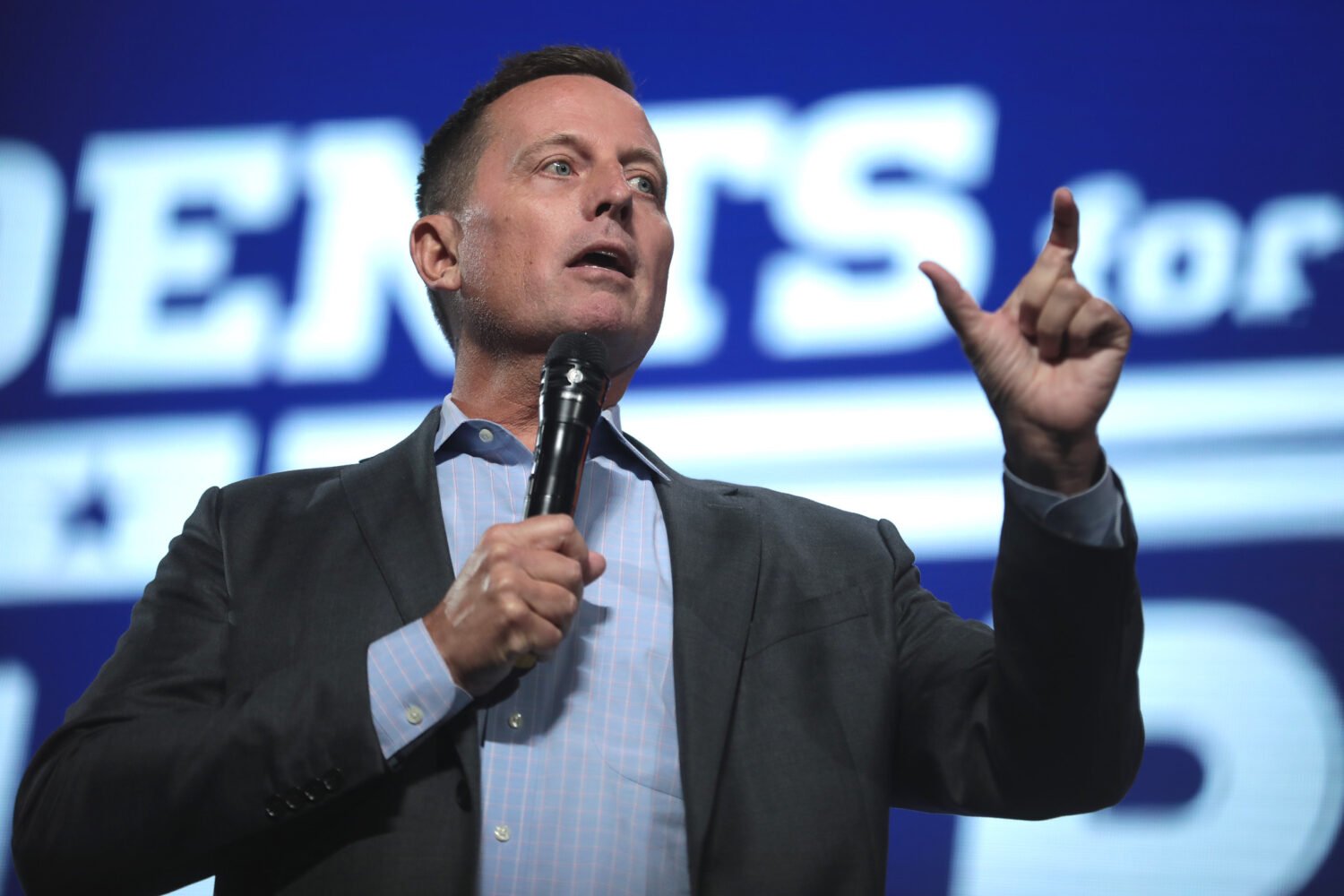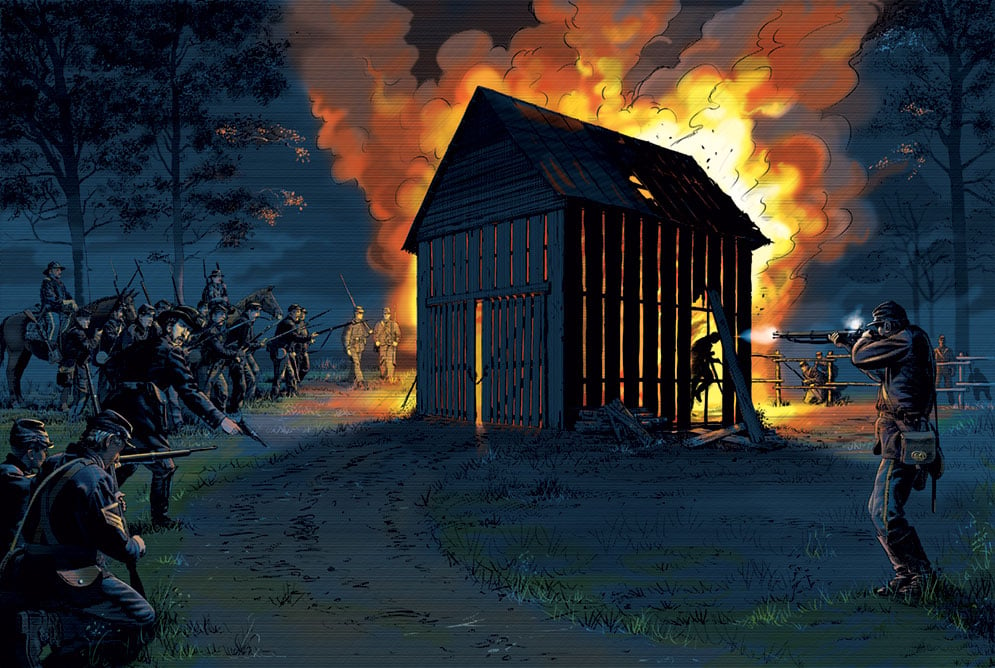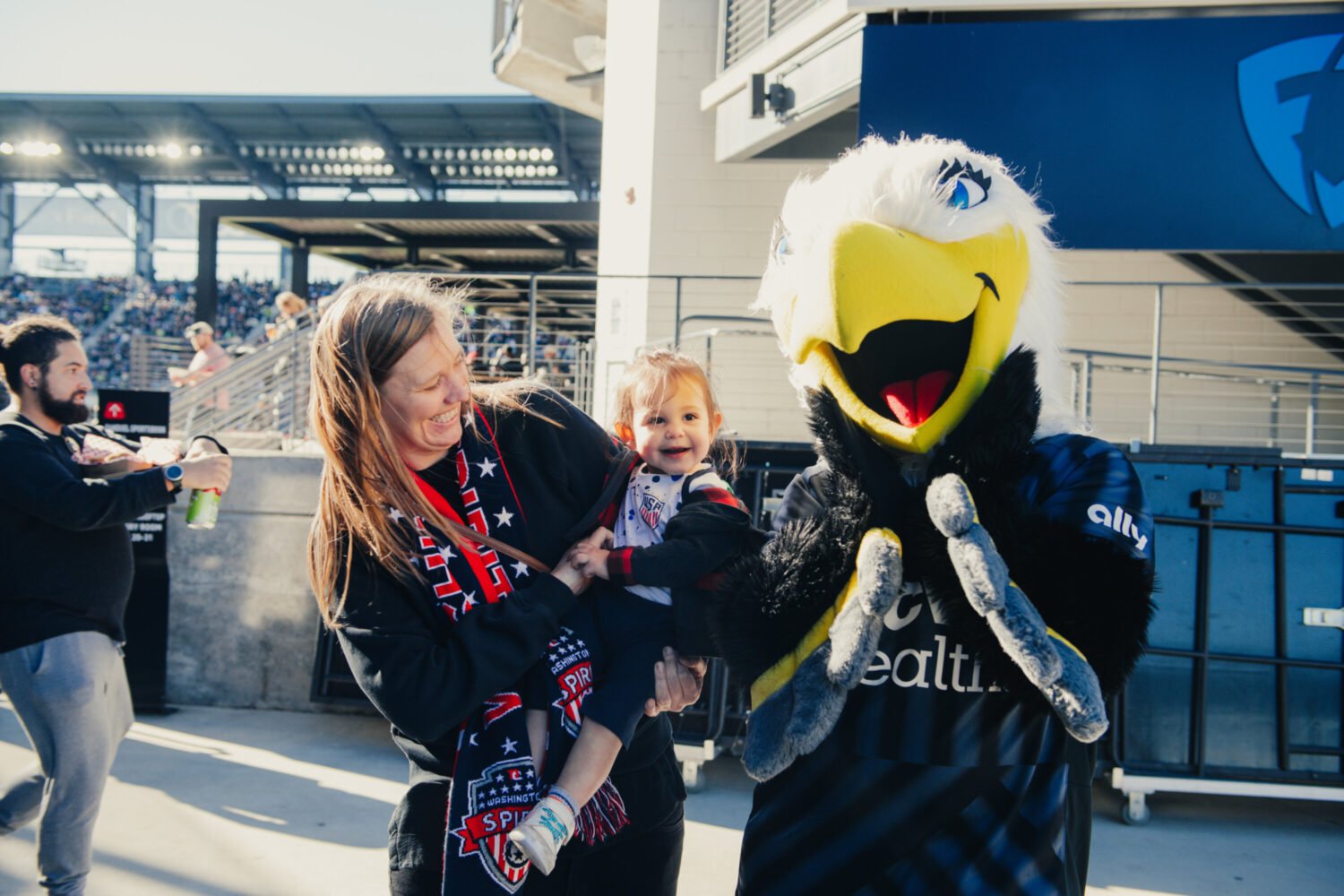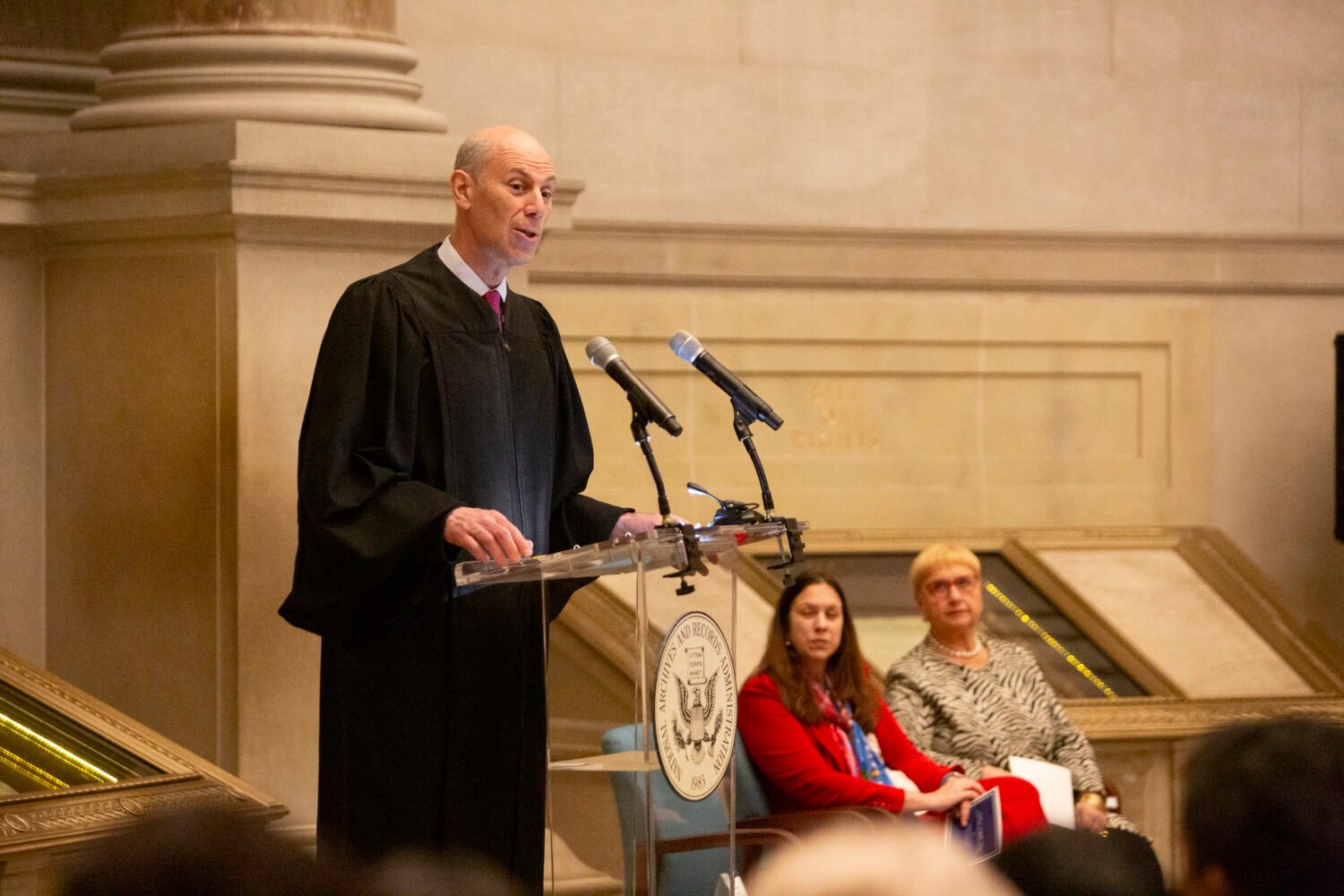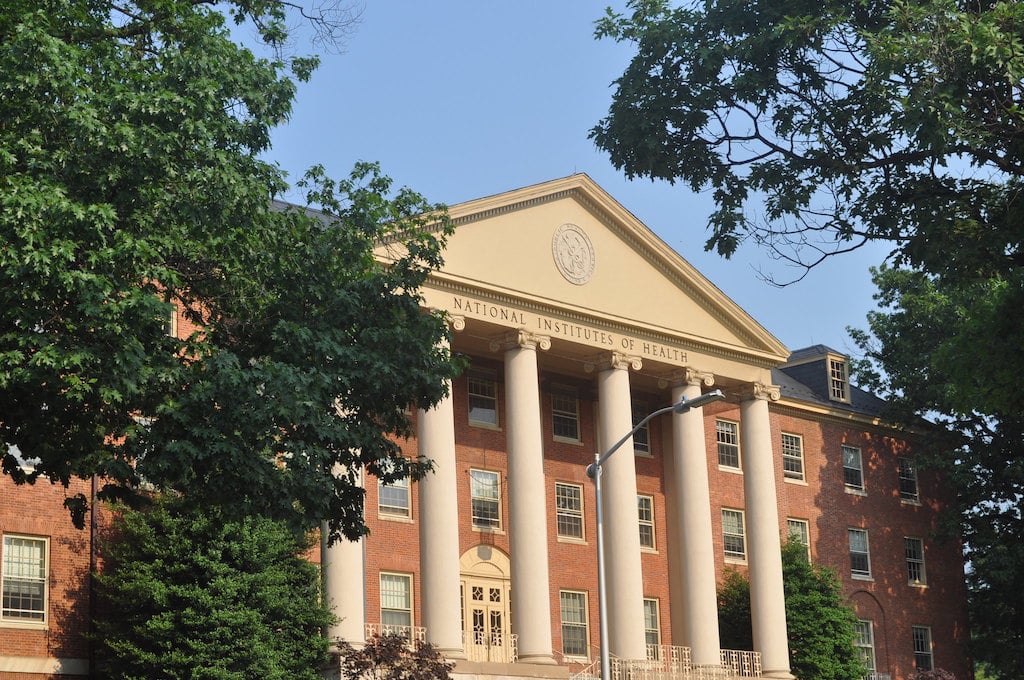National editor Kim Eisler (keisler@washingtonian.com) grew up in Virginia and has followed the Redskins since 1951. Editorial intern Caleb Hannan helped conduct interviews for this article.
As Mark Brunell runs onto FedEx Field, he carries the hopes of a city that has always regarded the Redskins quarterback as pretty close to Washington’s most important person. Presidents, after all, are term-limited. Redskins quarterbacks are not.
That works two ways. For the past 12 years—since the departure of Super Bowl MVP Mark Rypien—at least 20 quarterbacks have taken snaps for the team. The Redskins have won no league championships in those years.
In the Redskins’ first 14 seasons, the team had just one starting quarterback, Sammy Baugh. Even in the team’s lean years of the late 1960s, the colorful Sonny Jurgensen united Washington as no politician can.
The great quarterbacks, from Baugh and Jurgensen to Billy Kilmer and Joe Theismann, have become as much a Washington tradition as elections and scandals. They provided the city with some of its greatest moments.
Sammy Baugh came to Washington in 1937. While President Roosevelt led the country against foreign enemies, Baugh led the Skins against the hated Chicago Bears and New York Giants.
The greatest of his many historic moments came at the end of the first season. After being knocked out in the second quarter by the Chicago Bears, Baugh came back to connect on a 55-yard touchdown pass to Wayne Millner. Then, with the score tied at 21, Baugh hit Ed Justice to win the Redskins a championship. The love affair between Washington and the Redskins had begun.
In leading the Redskins to championship after championship in the 1940s, Baugh helped change football from a running game to a passing game.
Today, at age 92, Baugh lives in a West Texas nursing home, the last surviving member of his 1937 team.
In 1952, General Dwight Eisenhower ended the 30-year run of Democrats in the White House. At the same time, Eddie LeÂBaron, a man called the Little General, arrived fresh from winning two Purple Hearts and a Bronze Star in the Korean War.
The 22-year-old Marine was only five-foot-seven. But he was one of the greatest leaders in NFL history—a good complement to Eisenhower, whom LeBaron sometimes met for golf at the Burning Tree club in Bethesda.
Replacing a legend like Baugh wasn’t all that daunting for LeÂBaron. “It was less pressure than I felt in Korea being shot at,” he told The Washingtonian reÂcently from his California law office.
LeBaron’s seven-year tenure in Washington roughly coincided with Ike’s. But it was not without problems. LeBaron despised Redskins coach Curly Lambeau. In 1954 LeBaron went AWOL to play in the Canadian League.
After Lambeau left, LeBaron returned to the Redskins in 1955. In his first game back, he had his most memorable night. The Redskins had lost nine straight to the Cleveland Browns, who had pounded them 62–3 in their last meeting. Eddie not only threw for two touchdown passes, he also scampered around the big Cleveland defenders for a game-winning 20-yard touchdown.
LeBaron’s last full season with the Skins was 1959. Ralph Guglielmi, a former star at Notre Dame, took over and was joined by a late draft pick from Ole Miss named Eagle Day. The rookie started one game after Guglielmi was injured during preseason. Day, now executive director of the Mississippi Motor Vehicle Commission, still bristles at the distinction that he started one game and one game only. “I did punt, you know,” he says.
Though he was eventually traded to the St. Louis Cardinals, where he had a short and undistinguished career, Guglielmi returned to Washington. He became the manager of a Cadillac dealership and is now retired in North Carolina.
LeBaron, 76, became an influential California lawyer. To those who followed the Redskins back in the 1950s, the Little General remains one of the most unforgettable players.
In 1960, without LeBaron, the team went 1–9–2. In 1961 the Skins made Wake Forest star Norman Snead their first pick in the NFL draft. To back him up, they signed another ex–Notre Dame quarterback, George Izo, who had been playing for the St. Louis Cardinals.
On his arrival, coaches told Izo not to expect to play. Redskins owner George Preston Marshall had paid a lot of money for Snead, and Snead was going to start come hell or high water.
Snead was supposed to be a can’t-miss choice—the Redskins had passed over University of Georgia quarterback Fran Tarkenton, a future Hall of Famer, to get him. In Snead’s first season, the Redskins went 1–12–1, winning their last game of the season against Dallas 34–20. Says Izo: “Snead would come off the field, walk up to me, and say, ‘I don’t know why you aren’t in there, George—I don’t know what the hell I am doing.’ ”
Snead now sells real estate in Naples, Florida. Izo stayed for four seasons and in 1964 was traded to the Lions. He is now in the food-distribution business and lives near Richmond.
Izo did not leave without a highlight. On September 15, 1963, stepping in for Snead, he threw a 99-yard touchdown pass to Bobby Mitchell, a Redskins record.
In 1963, with the team 3–11 under new coach Bill McPeak, the Redskins gave up on Snead. In the offseason he was traded to the Philadelphia Eagles for Christian “Sonny” Jurgensen. Already 30 years old, Jurgensen had been with the Eagles for seven years, but in their 1960 championship season he had been overshadowed by NFL legend Norm VanBrocklin. In his last season with the Eagles, the team went 2–10–2.
Jurgensen took over play-calling for the Redskins in 1964. Izo asked to be traded, and the team brought in University of Maryland star Dick Shiner as backup. Hometown hero Shiner was dealt to the Cleveland Browns the following season and had a vagabond career in the league. Today he helps coach quarterbacks at Bishop McDevitt High School in Harrisburg, Pennsylvania. Last year he helped persuade heavily recruited McDevitt quarterback Jeremy Ricker to attend Maryland.
Sonny became a Washington legend by dint of his rocketlike arm and colorful personality. While the Redskins didn’t win any championships, games were never dull. He completed more passes, mostly to Bobby Mitchell, Jerry Smith, and Charley Taylor, than any other Redskins quarterback.
Sonny’s most memorable game was on Thanksgiving Day 1965, when the Cowboys took a 21–0 lead against the Skins at RFK Stadium. Sonny gathered the team together and said, “Guys, we’re at home. We can’t get beat like this.”
He then went out and threw for 411 yards, leading the team back to beat the hated Cowboys 34–31. Jurgensen scored a touchdown on an improbable quarterback sneak and threw a game-winning 35-yard pass to Bobby Mitchell. Lonnie Sanders still had to block a game-ending field-goal attempt. It remains one of the most emotional wins in Redskins history.
Jurgensen’s heroic passing and his “let’s go out and have a beer” image enlivened a decade in which the team’s record wasn’t very good. He proved that you didn’t have to win to have fun.
In 1968 the Redskins traded for UCLA’s Gary Beban, who had beat out O.J. Simpson for the 1967 Heisman Trophy. With Jurgensen in place, coach Otto Graham used Beban very little.
The following year Vince Lombardi took over, and Beban was optimistic that he would play. But Beban never started a game and threw just one pass as a Redskin. His business career turned out fine. He is senior executive managing director at CB Richard Ellis in Chicago, a big real-estate firm.
Lombardi came to Washington in 1969 and turned the Redskins into a winning team. He and Jurgensen meshed, and Sonny had one of his best seasons, though the Skins missed the playoffs. The following year, Lombardi was diagnosed with cancer, and he died before the start of the 1970 season.
“Overnight we went from so much optimism to tragedy,” recalls Beban.
In 1971 George Allen arrived from the Los Angeles Rams to put his imprint on Redskins history. He was not a big Sonny fan, and he decided to bring in another quarterback, a feisty UCLA grad named Billy Kilmer, who had been playing for the New Orleans Saints.
Allen was a defensive-minded coach; what he mostly wanted out of a quarterback was that he not turn the ball over. Kilmer didn’t throw many interceptions. “He just took a liking to the way I played,” Kilmer recalls.
Jurgensen broke his shoulder in an exhibition game, and with Kilmer at the helm, the Redskins won their first five games and beat Dallas at Dallas. A quarterback controversy was on.
Under Kilmer the team made the playoffs for the first time in the 26 years since 1945. Throughout the 1970s the Sonny-Billy rivalry was the city’s most interesting topic of conversation. Bumper stickers divided the Billy people from the Sonny people. Billy and Sonny also rivaled each other in the late-night-fun department.
Kilmer is still remembered for the night in 1971 he got arrested in an Arlington coffee shop. As the story went, Kilmer tried to pay for a cup of coffee with a $100 bill. As he argued with the waitress, a policeman showed up. Kilmer, who hadn’t been drinking just coffee all night, told the policeman, “If you think I’m wrong, put me in jail.”
The policeman obliged. Kilmer got out of jail in time to lead the Redskins to the playoffs against San Francisco, and he won the hearts of fans when he told the waitress she could keep the $100 as a tip.
In 1972 the team went 11–3 and lost to the Miami Dolphins in the Super Bowl. Billy threw 19 touchdown passes that year; Sonny threw just two. The Redskins landed in the Super Bowl after beating the Cowboys to win the NFC championship. Kilmer’s two wounded ducks to receiver Charley Taylor resulted in touchdowns as the Redskins beat the Cowboys 26–3.
Washington was made the favorite over a Miami Dolphin team that had raced through 16 straight games without a defeat. No team had ever won them all.
The Dolphins would make history at the Redskins’ expense. The most memorable play of that game was set up by a Kilmer interception thrown to Miami defensive back Jack Scott in the end zone during a fourth-quarter comeback. After Scott returned the errant ball 55 yards, Miami kicker Garo Yepremian lined up for a field goal. His kick was blocked by Redskins defensive end Bill Brundige.
In a play that has become a staple of “football follies” broadcasts, Yepremian picked up the ball, threw it into the air, and watched as Redskin Mike Bass ran it back for Washington’s only touchdown of the game.
Despite the Sonny-versus-Billy controversy, JurÂgensen was helpful to his rival, a trait that Beban says Sonny showed all potential usurpers. If there was one thing Sonny was not, it was insecure.
“He helped me with a lot of things,” says Kilmer. “The main thing was how to get my hips into the throw. I was more of an arm thrower before that, and I always had very sore arms and elbows.”
Jurgensen also offered to help Kilmer with his grip, trying to correct Kilmer’s wobbly passes. After Kilmer explained that he had small hands and couldn’t grip the ball like Sonny did, Jurgensen playfully spread the story among sportswriters that Kilmer had a “birth defect.”
“It was no birth defect,” says Kilmer. “It’s just the way my hands were.” Kilmer, who at 67 lives in Florida and owns and bets racehorses, still stays at Sonny’s house when he comes to town.
The following year Sonny was supposed to be back in charge. But against the New York Giants, he snapped an Achilles tendon. Kilmer came back again and led the team into the division playoffs against Minnesota.
In 1974 the team had its third good season in a row. The Billy-Sonny act worked. Neither man had ever played on a championship team before. “We knew it was a good thing,” says Kilmer. “And it didn’t hurt that we hung out in the same saloons.”
That season they were joined by a self-assured backup quarterback and punt returner named Joe Theismann, who had played in Canada for three seasons after leaving Notre Dame. Theismann arrived during a preseason players’ strike, started the team’s first exhibition game in Houston, and played pretty well. Asked after the game how things would be when Sonny and Billy returned, Theismann replied that there still would be room for them on the bench.
After reading Theismann’s quote in the paper, Kilmer called Jurgensen. “Sonny said not to worry,” Kilmer recalls. “ ‘We’ll have him catching punts by the end of the year.’ ”
Sonny was prophetic, Kilmer says. “TheisÂmann ended up that year doing exactly that—returning punts.”
The 1974 season marked the end of Jurgensen’s playing days. The team went 10–4 and again made the playoffs, after which Sonny retired at age 40.
In 1976 Theismann got more and more snaps, and the Redskins went 10–4, pretty much a routine record in the Allen era. By 1978, the brash Theismann had become the starting quarterback and Kilmer the backup. The transition from the Sonny-Billy years to the Theismann era was complete. The Redskins were now Joe’s team.
In 1982, under coach Joe Gibbs, who had come the previous year, Theismann took every snap but one as the Skins went 8–1 and beat Miami in the Super Bowl after a strike-shortened season.
In the Super Bowl, Theismann went 15 for 23 for 143 yards and threw two touchdown passes. But his greatest contributions might have been his 38 handoffs to fullback John Riggins, who rushed for 166 yards. Riggins was typically modest after the game: “Ron may be President, but I’m the king.”
In 1983, Theismann took the team to the Super Bowl again and was the league’s most valuable player. Super Bowl XVIII, played in Tampa, proved to be a game to forget as the Raiders won 38–9. It was the most lopsided loss, up to that time, in the bowl’s 18-year history. But Theismann’s 29 touchdown passes for the season were the second most in team history after Jurgensen’s 31 in 1967.
Joe’s 1984 team made the playoffs but lost in the first round to the Chicago Bears.
If Theismann was going to make a run at being the greatest Redskins quarterback of all time, Lawrence Taylor didn’t get the message. Theismann’s most unforgettable moment as a Redskin was also one of the most horrifying. Theismann was 36, the same age Brunell is now, when his leg was crushed by the New York Giants linebacker November 18, 1985, on Monday Night Football.
Gibbs rushed Jay Schroeder, a third-round draft pick from UCLA, onto the field. Although he had thrown only eight passes in his pro career, Schroeder fired a 44-yard completion to receiver Art Monk and engineered a 23–21 comeback win.
Schroeder played the last five games of the season, winning four—including a 30–23 win over the Pittsburgh Steelers. The Redskins finished 10–6 but missed the playoffs.
Under Schroeder in 1986, the team went 12–4, Schroeder made the Pro Bowl, and the Redskins made it to the NFL championship game. To back him up, the Skins reached for a former Tampa Bay Bucs quarterback, Doug Williams, who had left the NFL in 1982 to play in the ill-fated USFL.
Jay Schroeder’s early success made it appear that he was in line to become the team’s sixth great quarterback, after Baugh, LeBaron, Jurgensen, Kilmer, and Theismann. But in 1987 Schroeder went down with a shoulder separation in the season opener against the Eagles. Doug Williams entered the game and threw a 57-yard strike to wide receiver Ricky Sanders.
After Schroeder got healthy, Gibbs called on Williams several times for come-from-behind victories. The controversy at season’s end was who would start in the playoffs. Gibbs chose Williams, a decision that crushed Schroeder.
So Doug Williams, not Schroeder, led the team to a stunning 42–10 victory over John Elway’s Denver Broncos in Super Bowl XXII, played in San Diego on January 31, 1988. Williams threw four touchdown passes in the second quarter. His 80-yard touchdown pass to Ricky Sanders still stands as one of the team’s most electrifying moments. Then there was a 27-yard work of art that Gary Clark grabbed in the end zone. Then a 50-yard strike to Sanders. The last touchdown of the quarter went to tight end Clint Didier. That arguably was the greatest single quarter in NFL history. It is hard to imagine that any team will ever again score 35 Super Bowl points in one quarter.
Schroeder and Williams were not on speaking terms, and it was clear that one had to go. “Jay and I didn’t have a relationship,” says Williams. “I don’t know if Jay interacted with anyone—Jay kept to himself.”
Williams says his anger at Schroeder stemmed from a play early in the season when Gibbs sent him in and Schroeder refused to leave the huddle, leaving a humiliated Williams standing on the field, not knowing what to do. “Finally I went back to the sideline,” Williams recalls. “If the coach couldn’t get him off the field, I guess I couldn’t either.”
Schroeder was dealt to the Oakland Raiders. Today he helps coach football at Dixie State College in St. George, Utah.
At age 32, Doug Williams became the new face of the Redskins. But 1988 turned into a difficult 7–9 season. Williams was joined by Mark Rypien, a Canadian-born, sixth-round 1986 draft pick from Washington State. Like Williams, Rypien was big and competitive. Unlike Schroeder, he was affable and a team player. After Williams suffered an appendicitis attack on September 21, 1988, Rypien took over and led the team to 10–6 records in both 1989 and 1990.
In 1991 Rypien joined Baugh, Kilmer, TheisÂmann, and Williams in leading the Redskins to a league championship. In the Super Bowl against the Buffalo Bills, Rypien was a magnificent leader, throwing touchdown passes to Earnest Byner and Gary Clark. He ended his greatest season by being named most valuable player in the Super Bowl.
But by 1993, the team was again on hard times. Joe Gibbs had retired, and Richie Petitbon took over as head coach. Jack Kent Cooke showed little patience with Petitbon and in 1994 replaced him with Norv Turner. Rypien, beset with family problems and injuries, took off for the Cleveland Browns after a contract dispute with Cooke.
It was an unfortunate ending after five years that established Rypien as one of the most likable and effective quarterbacks the Redskins would ever know. He played five more years with four teams. He now lives outside Spokane, Washington, and owns motels around the Northwest.
Norv Turner came to the Redskins known for his ability to train young quarterbacks. He was credited with helping Troy Aikman become a star in Dallas. The Redskins had gotten rid of two quarterbacks who had tried out as backups, Rich Gannon and Stan Humphries. Both would lead other teams to postseason play, but in 1994 neither seemed as promising as Heath Shuler, a 23-year-old All-American from the University of Tennessee.
Shuler quickly shot himself in the foot with a contract holdout. By the time he got into uniform, a player drafted much lower, Gus Frerotte, had stolen the hearts of the fans with his exhibition-season play. Frerotte didn’t play much that first season. Cooke had an investment in Shuler and wanted to see it pay off.
The year 1994 marked the end of the era of stability in Redskins quarterbacks. For the next decade, the position has been filled by a succession of circus acts.
In 1995, with Shuler and Frerotte fighting it out, the Redskins went 6–10. Frerotte won the job the next year and guided the Redskins back to a winning record of 9–7 but no playoffs. Shuler appeared in only one game that season.
The mediocrity continued in 1997. Shuler went off to New Orleans, and Jeff Rutledge and Trent Green became backups to Frerotte.
The highlight of Frerotte’s career was a bizarre moment in November 1997 when, after a one-yard touchdown run against the New York Giants, he celebrated by banging his head into a stadium wall by the end zone.
Making $4.5 million a year at the time, Frerotte sprained his neck and had to be taken off the field to a New York City emergency room. Between Shuler and Frerotte, Gus was supposed to be the smart one. Jeff Hostetler replaced Frerotte, throwing two interceptions and fumbling once. The game ended in a rare 7–7 overtime tie.
Heath Shuler eventually would move back to North Carolina and get a real-estate license. In November he is on the ballot as the Democratic candidate for the US House of Representatives. FreÂrotte is still with the St. Louis Rams.
By 1998, Trent Green was the Redskins quarterback. But after Dan Snyder bought the team following Cooke’s death, Green went to the St. Louis Rams, who offered him more money than the Redskins were willing to pay, and then was traded to the Kansas City Chiefs, where he built a record as one of the league’s best quarterbacks.
Others came and went so quickly they barely had time to introduce themselves. Among them were Cary Conklin, Tony Banks, Rodney Peete, Kent Graham, Tim Hasselbeck, and Rob Johnson.
In one of his last acts before leaving Washington to take over as general manager of the Houston Texans, Redskins general manager Charley Casserly brought Vikings quarterback Brad Johnson to town in 1999. But new owner Dan Snyder insisted that the job go to the temperamental Jeff George. Snyder’s micromanaging of the quarterback position led to the firing of Norv Turner and the hiring of Marty Schottenheimer in 2001.
Brad Johnson, whom Snyder felt wasn’t good enough to play for the Redskins, led the Tampa Bay Bucs to a Super Bowl in 2002. His opponent was Raiders quarterback Rich Gannon, who had been a Redskin in 1993 but wasn’t considered worth keeping. That same 2002 season, the Redskins went 7–9 under a trio of quarterbacks not destined for the Hall of Fame: Danny Wuerffel, Shane Matthews, and Patrick Ramsey.
Like Shuler, Patrick Ramsey—a college star at Tulane—had been designated the savior of the franchise. It was not to be.
In 2004 Joe Gibbs, back for a second term as coach, decided to sign 34-year-old Mark Brunell, a castoff from the Jacksonville Jaguars. Ramsey departed for the New York Jets.
Optimism now is high that Brunell can take the Redskins back to a Super Bowl. Brunell had a terrible 2004 but came back last year and led the Redskins to a 10–6 record and the playoffs. If Brunell gets hurt, his replacement likely would be Jason Campbell, a good athlete but a relatively inexperienced quarterback drafted last year out of Auburn.
One thing the history of Redskins quarterbacks shows is that you can’t rush them. The failures—Norm Snead, Gary Beban, Heath Shuler—were all weighted down with unreasonable expectations and rushed into action before they were ready.
“It takes longer than a year or two,” says Beban, “for a young quarterback to learn enough not to hurt you. If you look at Troy Aikman or Steve Young, the great quarterbacks, they sat for years.”
The Redskins greats—Jurgensen, Kilmer, Theismann, Williams, Rypien—all watched the game from the bench before their periods of glory arrived.
With the 36-year-old Brunell at the helm and no talented and experienced backup, it doesn’t appear that owner Dan Snyder has fully grasped what it takes to produce a Super Bowl champion.
“If I were running the Redskins,” says Billy Kilmer, “I would be very worried.”

